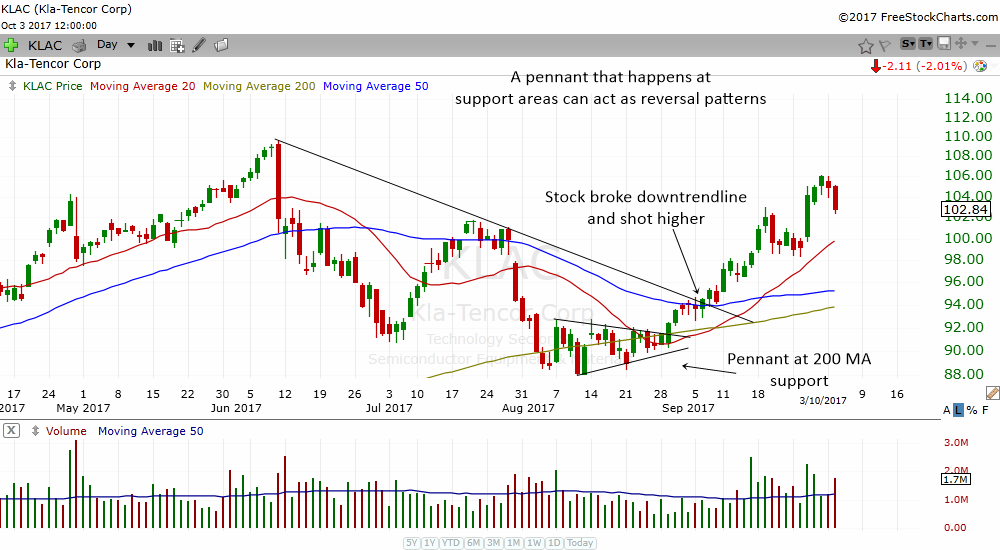Content

Meanwhile, suppliers find they are guaranteed a new, higher price than they were charging before. The problem is that this creates excessive supply, in which case the government ends up buying and stockpiling the extra quantity. In the end, even with good intentions, a price floor can hurt society more than it helps. It may help farmers or the few workers that get to work for minimum wage, but it does not always help everyone else.
The price ceiling may lead to inefficiency in the system because people are reluctant to move from one location to another owing to their inability to obtain a market price for their apartment. Consequently, people may be turning down jobs for which they are the best candidates and the restriction on labor mobility leads to inefficient allocation of resources. The consequence of a price ceiling on rents may be queues and waiting lists for apartments caused by the increase in demand. Some landlords may impose certain criteria on the tenants they accept, causing discrimination against certain categories of tenant. The withdrawal of some apartments from the market is likely to increase the problems caused by shortages of accommodation.
Either because this is viewed by the population as supporting the traditional rural way of life or because of the lobbying power of the agro-business industry. Figure 2 illustrates the effects of a government program that assures a price above the equilibrium by focusing on the market for wheat in Europe. In the absence of government intervention, the price would adjust so that the quantity supplied would equal the quantity demanded at the equilibrium point E0, with price P0 and quantity Q0. However, policies to keep prices high for farmers keeps the price above what would have been the market equilibrium level—the price Pf shown by the dashed horizontal line in the diagram.
Despite how commonplace price floors are, most economists still advocate against them. Besides, when prices are kept artificially low, the demand for such goods and services may exceed the available supply. Such a situation can lead to shortages or queues at shops, which can be inconvenient for consumers. Besides, establishing price ceilings can help to maintain competitive market relations. When no single entity is allowed to charge more, smaller firms can remain competitive and prevent big companies from creating a monopoly. The primary distinction between price ceiling and price floor is that the former method pertains to circumstances of market failure, such as when a monopoly exists, or prices are deemed unjust.
Such changes can cause a change in the demand for rental housing, as Figure 3.21 illustrates. The effect of greater income or a change in tastes is to shift the demand curve for rental housing to the right, as the data in Table 3.7 shows and the shift from D0 to D1 on the graph. When a price ceiling is set below the equilibrium price, quantity demanded will exceed quantity supplied, and excess demand or shortages will result. When a price floor is set above the equilibrium price, quantity supplied will exceed quantity demanded, and excess supply or surpluses will result. Neither price ceilings nor price floors cause demand or supply to change.
Price regulations are governmental measures dictating the quantities of a commodity to be sold at a specified price both in the retail marketplace and at other stages in the production process. Weekly caps were set on wholesale gasoline prices based on the average of prices in Los Angeles and New York and on the Gulf Coast, but there was no cap on the markup added by gas stations. In 2016, India implemented a price floor on steel imports as a measure to discourage foreign competition, particularly from China, from flooding the market with cheap steel.
Before proceeding, a sound understanding of the laws of supply and demand is recommended. Laws that government enacts to regulate prices are called Price controls. A price ceiling keeps a price from rising above a certain level (the “ceiling”), while a price floor keeps a price from falling below a certain level (the “floor”).
What are Price Regulations?
This can mean a decrease in consumer consumption since there is less supply on hand and souring sales for companies (Arnold, 2015). Price floors aim to protect consumers from exploitation and ensure that producers receive a fair income for their products. They are typically implemented in industries where producers are vulnerable to price fluctuations (Arnold, 2015). A price floor, also known as “price support,” acts as a safeguard to maintain the price of an item above a certain level. Blocking prices from dropping below this threshold allows them to remain stable and secure for producers and consumers alike (Free, 2010).

As the cost of living rises over time, the Congress periodically raises the federal minimum wage. Certain industrialized countries and trading blocs such as the European Union have at times introduced price floors for agricultural goods, to protect their agricultural sector. Such price floors have had the effect of encouraging existing producers to increase their levels of production and attracting new firms to enter the market for certain agricultural goods. The Common Agricultural Policy (CAP) was introduced in Europe under the Treaty of Rome in 1957.
The price floor (applied at P2) disrupts the market equilibrium and changes supply and demand. At the higher price of P2, suppliers have the incentive to increase their output (from Q to Q3). At the same time, consumers who see the increase in price lose value, and some decide not to purchase, which decreases the demand (from Q to Q2).
Likely consequences of price ceilings are queues for goods, the introduction of rationing or the growth of a black market for the goods. Laws that government enacts to regulate prices are called Price Controls. A price ceiling keeps a price from rising above a certain level (the “ceiling”), while a price floor keeps a price from falling below a certain level (the “floor”).
Effects of a Price Floor
A price floor is a minimum price which a good can not be sold for less. To be effective, the price floor needs to be set above the market equilibrium price. Still, in some cases, price ceilings can also negatively affect the economy. For example, when prices are set too low, producers may not be able to cover their costs and will consequently struggle to stay in business (Coyne, 2015). Price ceilings and price floors are public regulations created to monitor the cost of services or goods in an economy.
- Yes, price floors and price ceilings do have a role to play in the market.
- These regulations act as control measures or emergency economic measures in the case of imperfect competition to prevent probable market failures.
- When a price floor is set above the market equilibrium, customers may turn to substitute goods instead.
- The original post-war rent control applied only to specific types of buildings.
The most common example of a price floor is the minimum wage, which guarantees a minimum compensation for labor. Another common example is in agriculture, as many nations put price floors to protect their food production. The big pro of a price ceiling is, of course, the limit on costs for the consumer. It keeps things affordable and prevents price-gouging or producers/suppliers from taking unfair advantage of them.
Economic Impact of Price Floor
Furthermore, such situations can result in long store queues and customer dissatisfaction. Second, when prices are set too low, producers may struggle to cover their costs and remain in business (Huizinga, 1995). Such a situation can lead to reduced competition and fewer choices for consumers, as fewer firms will be willing to produce or sell the good or service.
- When a price floor is implemented, sellers cannot sell below the set price, effectively creating a lower limit on the market price.
- In the absence of government intervention, the price would adjust so that the quantity supplied would equal the quantity demanded at the equilibrium point E0, with price P0 and quantity Q0.
- When a binding price floor is placed above the initial equilibrium, all market transactions must abide by the new price.
Clearly then, price ceilings and price floors both create deadweight loss. The excess supply created with a price floor represents the deadweight loss. For price ceilings, the deadweight loss is the loss of income from not being able to sell at the equilibrium price. Where a price ceiling is set and is below the equilibrium price set by supply and demand, the effect is to cause the producers to decrease their production while consumers demand more of the product. Existing producers have to accept a lower price than they would otherwise set for their goods or services, and as a result some of the producers are likely to withdraw from the market.
What are Price Floors and Ceilings?
Workers get additional value for their labor which is the green shaded area of the graph, the extra value created by the price floor is the green rectangle of producer surplus. They can get to be a problem, though, if they continue too long, or when they are set too far below the market equilibrium price (when the quantity demanded equals the quantity supplied). When a price ceiling is put in place, the price of a good will likely be set below equilibrium.

It can help to stabilize the market by preventing producers from experiencing financial losses due to price fluctuations (Dufwenberg et al., 2006). For example, the government can establish a price floor on milk to guarantee farmers a stable income level. This political action shields producers from market fluctuations by mandating the lowest amount of money they can ask for their products. A price floor is a price control that sets a minimum price for goods or services. It acts as an artificial prop to keep prices above equilibrium, thus protecting producers from price competition. Maybe you or a friend lives in a place with incredibly high rent, like Manhattan, San Francisco, or (gasp!) London.
A price floor is the lowest price that one can legally pay for some good or service. Perhaps the best-known example of a price floor is the minimum wage, which is based on the view that someone working full-time should be able to afford a basic standard of living. The federal minimum wage in 2016 was $7.25 per hour, although some states and localities have a higher minimum wage.
A strong agricultural food industry maintains a country’s autonomy and security. With global trade active between over a hundred countries producing either the same food or substitutes, this price ceiling and price floor examples provides a lot of competition to every farmer. For example, many municipal governments enforce policies that limit raises in rental prices, in order to keep housing more affordable.
While in the short run, they often benefit consumers, the long-term effects of price ceilings are complex. They can negatively impact producers and sometimes even the consumers they aim to help, by causing supply shortages and a decline in the quality of goods and services. Like a price ceiling, a price floor may be set by the government or, in some cases, by producers themselves.
